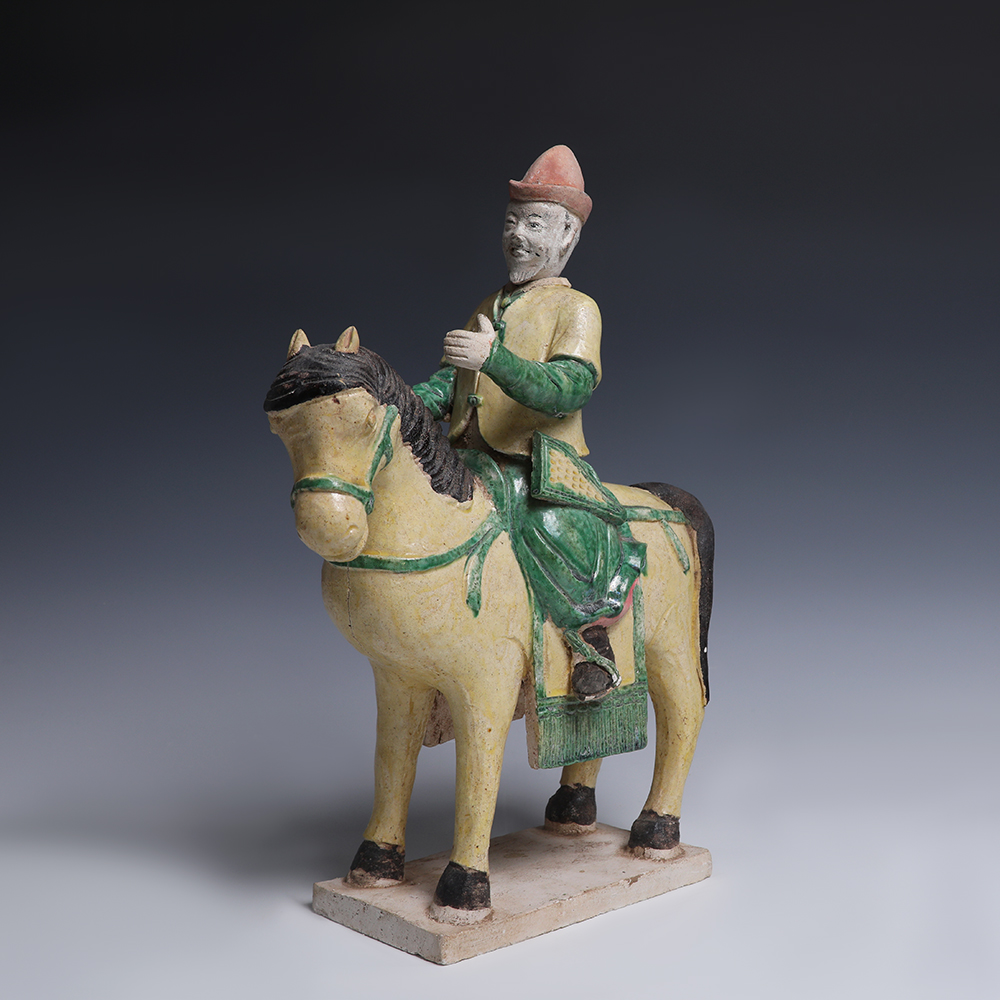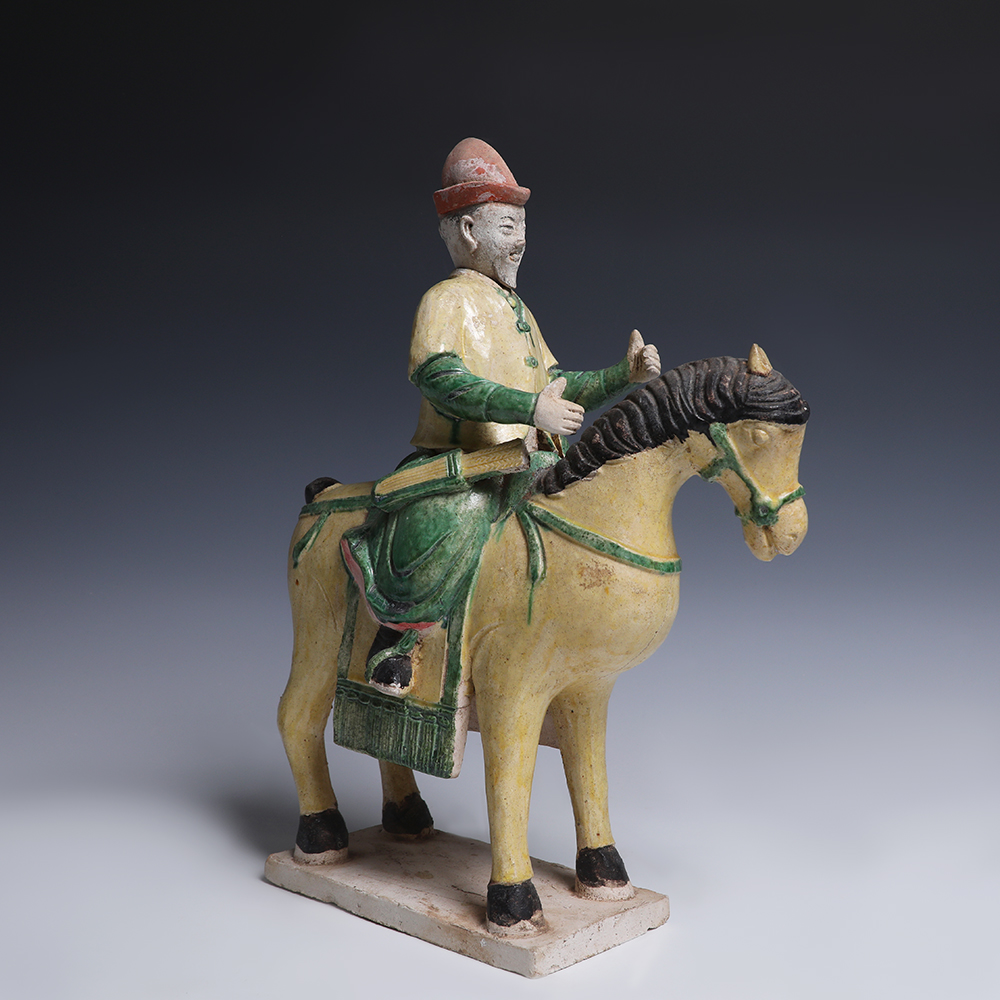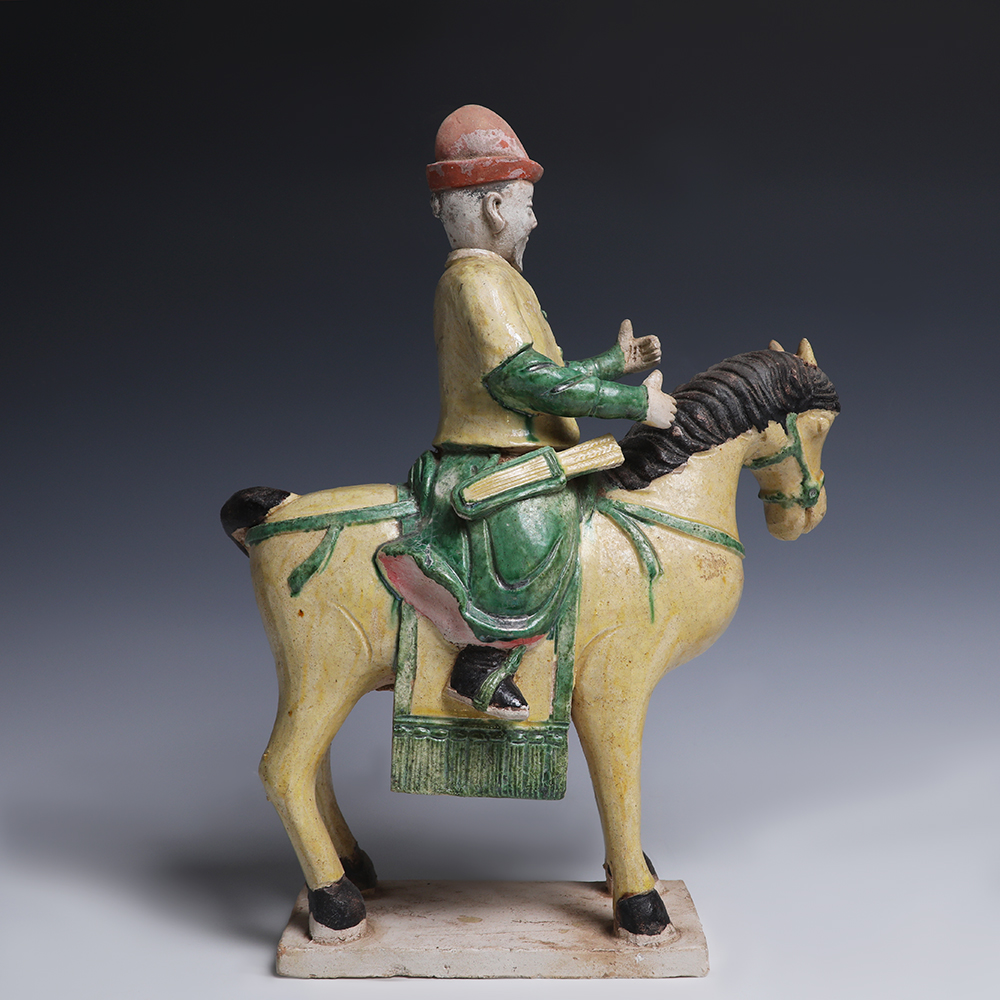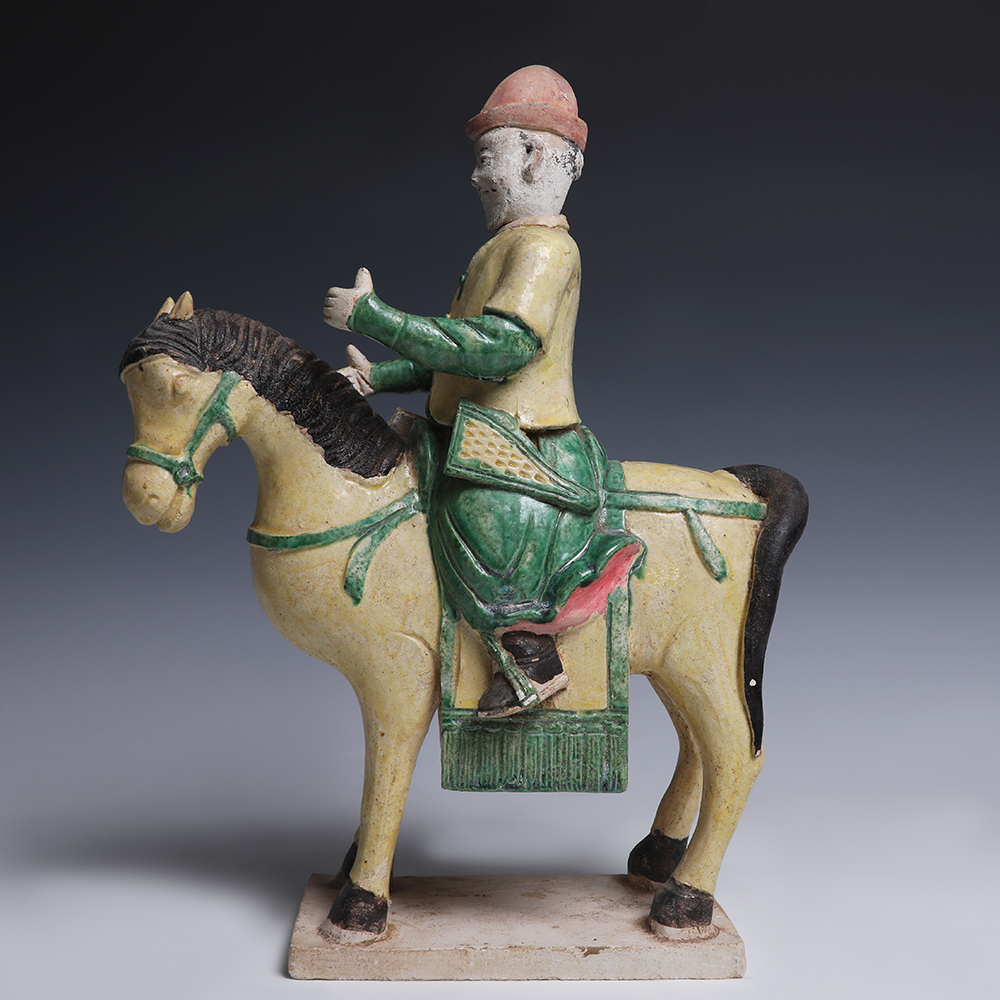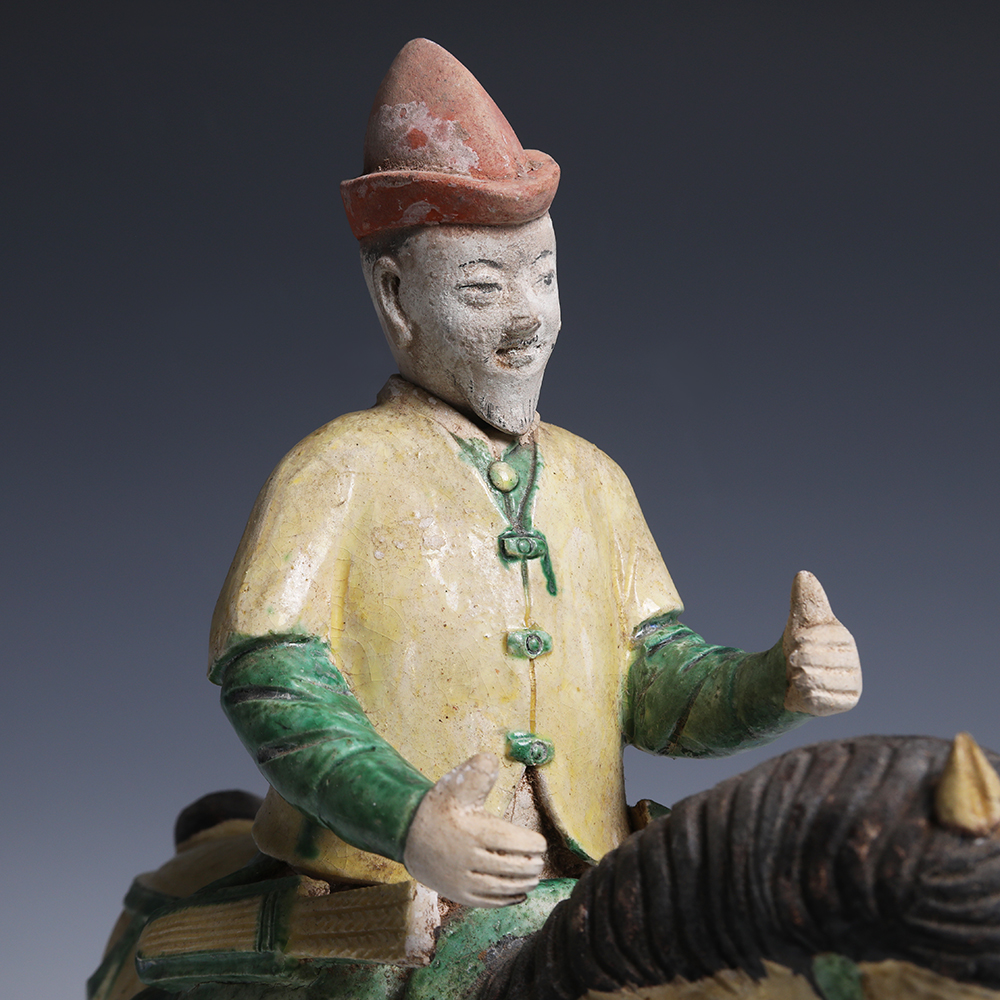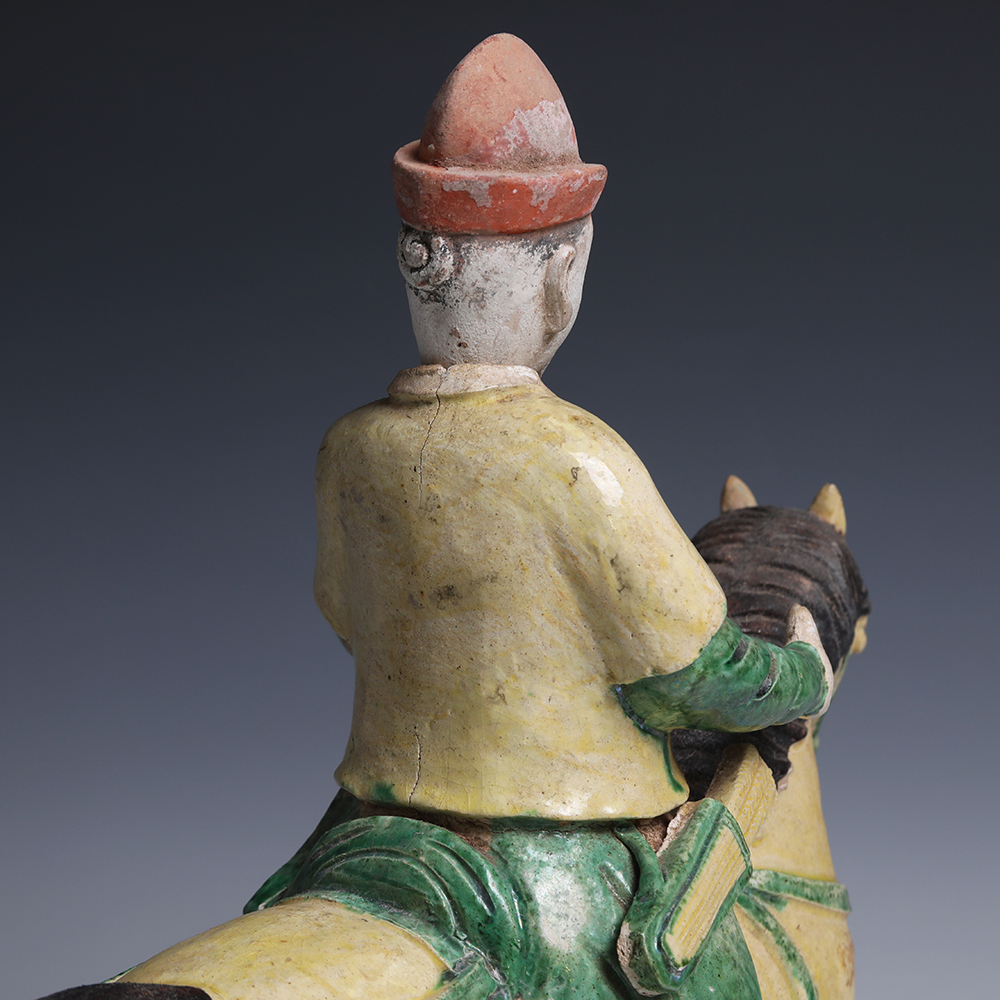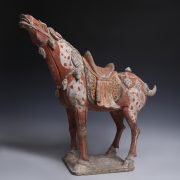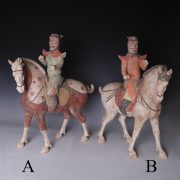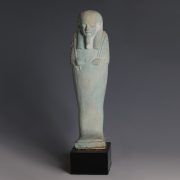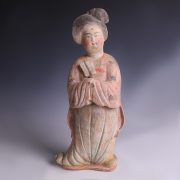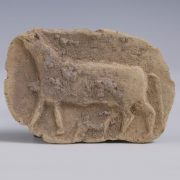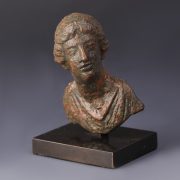Grave goods were an important status symbol in ancient China, so the affluent and important would be accompanied in their travels through the afterlife with numerous depictions of people, items and animals. Such terracotta figures were made for the service and entertainment of the owner, ensuring that their journey in the underworld was a happy one. It was believed that these figures would serve and assist the deceased in the afterlife. Figures of this type are called mingqi (冥器) in Chinese, and usually depict servants, officials, soldiers, musicians, court attendants, dancers and, in the case of animals, horses and Bactrian camels. As in life, attendant figures are depicted standing nearby, waiting to fulfil the desires and needs of the deceased. A soldier figurine, such as this, accompanying the deceased in the afterlife was believed to act as protection.
To discover more about Chinese terracotta statuettes and horses in Chinese culture, please visit our relevant blog posts: Terracotta Tomb Attendants and The Horse in Chinese Art and Culture.
